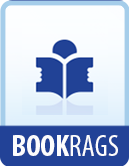ball struck the cannon in the embrasure and rolled
on till it fell at his feet. General Knox took
him by the arm. “My dear General,”
he exclaimed, “we can’t spare you yet.”
“It is a spent ball,” Washington rejoined
calmly; “no harm is done.” When the
redoubts were taken, he drew a long breath and said
to Knox: “The work is done, and well done."[1]
Lord Cornwallis saw that his position was desperate,
if not hopeless. And on October 16th he made
a plucky attempt to retard the final blow, but he did
not succeed. That evening he thought of undertaking
a last chance. He would cross the York River
in flatboats, land at Gloucester, and march up the
country through Virginia, Maryland, Pennsylvania, and
New York. Any one who knew the actual state of
that region understood that Cornwallis’s plan
was crazy; but it is to be judged as the last gallantry
of a brave man. During the night he put forth
on his flatboats, which were driven out of their course
and much dispersed by untoward winds. They had
to return to Yorktown by morning, and at ten o’clock
Cornwallis ordered that a parley should be beaten.
Then he despatched a flag of truce with a letter to
Washington proposing cessation of hostilities for
twenty-four hours. Washington knew that British
ships were on their way from New York to bring relief
and he did not wish to grant so much delay. He,
therefore, proposed that the formal British terms
should be sent to him in writing; upon which he would
agree to a two hours’ truce. It was the
morning of the 10th of October that the final arrangement
was made. Washington, on horseback, attended
by his staff, headed the American line. His troops,
in worn-out uniforms, but looking happy and victorious,
were massed near him. Count Rochambeau, with
his suite, held place on the left of the road, the
French troops all well-uniformed and equipped; and
they marched on the field with a military band playing—the
first time, it was said, that this had been known
in America. “About two o’clock the
garrison sallied forth and passed through with shouldered
arms, slow and solemn steps, colors cased, and drums
beating a British march."[2] General O’Hara,
who led them, rode up to Washington and apologized
for the absence of Lord Cornwallis, who was indisposed.
Washington pointed O’Hara to General Lincoln,
who was to receive the submission of the garrison.
They were marched off to a neighboring field where
they showed a sullen and dispirited demeanor and grounded
their arms so noisily and carelessly that General
Lincoln had to reprove them.
[Footnote 1: Irving, iv, 378.]
[Footnote 2: Irving, iv, 383.]
With little delay Washington went back to the North with his army, expecting to see the first fruits of the capitulation. There were nearly seventeen thousand Allied troops at Yorktown of whom three thousand were militia of Virginia. The British force under Cornwallis numbered less than eight thousand men.




